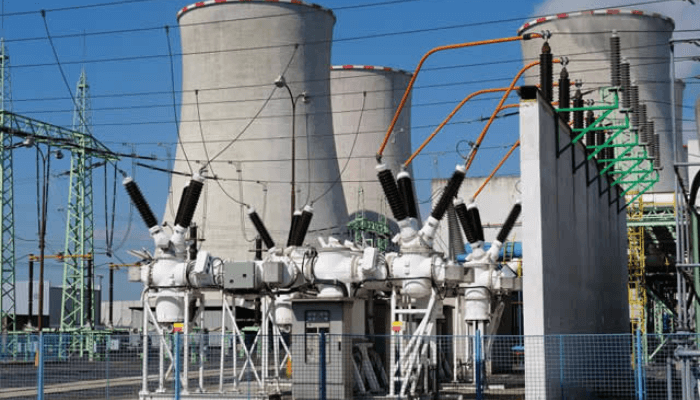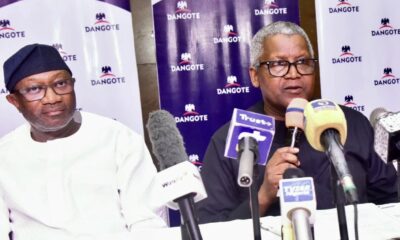Business
17 of Nigeria’s 23 power plants run below 50% capacity

…As blackouts pain deepens
Nigeria’s power grid slipped deeper into distress in October as new operational data show that 17 of the country’s 23 grid-connected power plants ran below 50 percent of their installed capacity, worsening nationwide blackouts and underscoring the escalating financial crisis gripping the electricity supply industry.
A detailed review of the Nigerian Electricity Regulatory Commission’s (NERC) latest performance factsheet reveals that several major generating stations delivered only a fraction of their potential output, constrained by acute gas shortages, crippling liquidity pressures, and escalating operational inefficiencies that continue to undermine the sector.
The NERC data show that power plants such as Olorunsogo II, with an installed capacity of 750MW, averaged barely 106MW in available capacity, translating to a plant availability factor of just 14 percent.
Afam I, with 726MW installed, delivered only 114MW on average, while Sapele Steam’s 720MW capacity saw a mere 15MW available, representing an alarming 2 percent availability, the lowest in the fleet.
Afam II performed only modestly better with 116MW out of 650MW, while Sapele II, despite its 500MW installed capacity, could muster just 97MW on average. Other facilities such as Omotosho II (14 percent availability), Ihovbor I (12 percent), Geregú II (25 percent), Omotosho I (26 percent), and Olorunsogo I (93MW out of 335MW) similarly operated far below standard efficiency thresholds.
Ibom Power, Rivers IPP, Omoku II, Ikeja West, Trans Amadi, Igboland Power, and Dadin Kowa also delivered between zero and 47 percent of installed capacity, highlighting the breadth of decline across the national grid.
The combined picture across these 17 underperforming plants paints a grim portrait of a system collapsing under the weight of chronic underinvestment and unresolved financial bottlenecks.
Plants that once offered reliable baseload support are now barely functional. Alaoji I generated nothing despite a 500MW installed capacity, Rivers IPP averaged only 39 percent availability, and Trans Amadi delivered just six percent of its 100MW potential.
Even mid-sized plants that historically performed above average, such as Geregú II, one of the fleet’s better-run assets, barely reached a quarter of capacity.
These patterns not only curtail available power but strain grid stability, forcing system operators to impose frequent load shedding as supply levels fail to match rising demand.
The cumulative impact: millions of homes, factories, hospitals, schools, and small businesses are experiencing some of the worst power shortages in years.
Industry operators say these declines are not random; they are fundamentally tied to the sector’s worsening financial crisis.
Joy Ogaji, pioneer CEO and former executive secretary of the Association of Power Generation Companies (APGC), told BusinessDay that gas suppliers, who provide the fuel that powers most Nigerian plants, are tightening supply due to mounting unpaid invoices.
“The biggest hurdles facing gas suppliers are the issues surrounding debts for contractual power that has been consumed. Gas suppliers are prioritising off-takers who can pay for the gas, not DisCos,” she said, referring to distribution companies whose remittance failures have become the sector’s most persistent drag.
Ogaji warned that without urgent intervention, the situation could degrade rapidly.
“Maybe by next quarter, gas suppliers will be operating below 30 percent because we can’t continue to widen our debt burden,” she said.
According to her, commitments made earlier in the year to clear outstanding debts remain unmet.
“We were promised the debts would be cleared in July. This is November, and we have yet to hear anything from the government. President Bola Tinubu is serious about clearing the debts, but the people surrounding him are playing pranks,” she added.
The liquidity crisis has become more visible in the financial disclosures of listed generation companies, where rising revenues are being offset by ballooning receivables.
A BusinessDay review of unaudited financial statements from Transcorp Power Plc and Geregu Power Plc shows that both firms reported substantial revenue growth but are unable to convert these earnings into cash. In the nine months ending September 2025, the two companies jointly earned more than N446.8 billion, compared to N335.9 billion in the same period of 2024.
However, receivables climbed to an estimated N602.5 billion, up sharply from N420.2 billion last year, as payments from the Nigerian Bulk Electricity Trading Plc (NBET) and other market operators continued to lag.
Transcorp Power’s receivables alone surged to N432.149 billion in Q3 2025, a dramatic rise from N298.389 billion recorded at the end of 2024, nearly a 45 percent year-on-year increase. Geregu Power, which has become one of the grid’s most reliable producers, also saw receivables climb from N121.82 billion in 2024 to N170.351 billion in the period under review.
“These mounting arrears reflect the deepening fragility within the Nigerian Electricity Supply Industry (NESI): distribution companies fail to collect and remit adequately, NBET faces widening shortfalls, and GenCos operate with increasing exposure to liquidity risk, unable to settle obligations to gas producers, staff, lenders, and maintenance contractors,” said Aisha Mohammed, an energy analyst at the Lagos-based Centre for Development Studies.
Mohammed added, “The downstream consequences of these disruptions are already reverberating across Nigeria’s economy”.
Manufacturers, who rely heavily on stable electricity for production, report escalating diesel consumption as plants fall deeper into underperformance. Households face longer hours without power, often exceeding 15 hours per day in some regions. Telecommunication operators warn of rising operational costs as they burn more fuel to power base stations, threatening service quality.
Hospitals continue to depend on backup generators for surgeries and critical care, while water utilities suffer intermittent supply disruptions due to inadequate power for pumping infrastructure.
Amid this intensifying crisis, President Bola Tinubu in July approved a N4 trillion bond initiative designed to settle legacy debts owed to GenCos and restore liquidity to the sector.
Olu Verheijen, special adviser on Energy to President Bola Tinubu, explained that the sector’s liquidity challenges stem from “a combination of unfunded tariff shortfalls and market shortfalls” accumulated over a decade.
She disclosed that as of April 2025, the federal government carries a verified exposure of N4 trillion in debts to GenCos, obligations that date back to 2015 and have snowballed through successive regulatory cycles marked by inadequate tariffs and inefficient market operations.(BusinessDay)
-

 News22 hours ago
News22 hours agoHackers infiltrate mobile phones of Dangote, Otedola – Report
-

 News20 hours ago
News20 hours agoLagos postpones rehabilitation works on Lekki-Ajah corridor
-

 Metro6 hours ago
Metro6 hours agoApologies from VDM and Mr Jollof Won’t Stop Ongoing Probe – Airline Insists
-

 Metro22 hours ago
Metro22 hours ago‘I don’t want Regina Daniels back’ – Ned Nwoko
-

 Politics18 hours ago
Politics18 hours ago“Come and save Nigeria’s democracy” – PDP chairman Turaki begs Donald Trump
-

 News6 hours ago
News6 hours agoHealth Workers’ Strike Paralyses Hospitals
-

 Business14 hours ago
Business14 hours agoBan on alcoholic sachet beverages, ‘ll trigger economic catastrophe – Labour
-

 Metro21 hours ago
Metro21 hours agoAircraft fight: I acted irresponsibly – Verydarkman apologises
